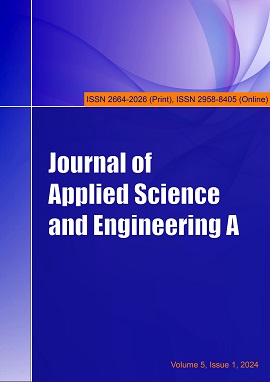A new methodology for choosing the efficient and optimal option of renewable energy for local heat supply
DOI:
https://doi.org/10.5564/jase-a.v5i1.3400Keywords:
individual customer, heat supply, eco-friendly technology, temperature zonesAbstract
One of the tendencies of the power engineering sector in Mongolia is to devise an eco-friendly new technology, and solve the problem of supplying heat from reliable sources to consumers in the centralized rural areas of the country. The soil temperature is divided into four different zones. The soil temperature starts from 1.6 meters for the 4th zone, the southern part like the Gobi provinces of Mongolia, where the soil temperature has never decreased, even in the coldest months of the year. The study compared solar collector systems and heat pump systems and proposed environmentally friendly and economically efficient heating technologies depending on the climatic zones of Mongolia.
Downloads
263
References
1. ADB TA 8727 REG: Study for a Power Sector Financing Road Map within Central Asia Regional Economic Cooperation - Final Report, Mongolia, 2018.
2. Proceedings on Special Permission Holders’ Meeting and Consultation on the Local Heat Generation, Ulaanbaatar, 2018.
3. Government of Mongolia (2015): State Policy on Energy Sector, 2015- 2030. Unofficial Translation.
4. National Statistics Office of Mongolia (2018): Population of Mongolia, by region, aimag and the capital. urban and rural, accessed on May 8, 2018.
5. Ch. Mangaljalav, New Eco-friendly Economical Techniques and Technology, Journal on Energy & Engineering 2010-4 (79).
6. E. Agarjav (2015): DH in Mongolia, Energy Efficient and cleaner heating in Ulaanbaatar, available at: http://www.lsta.lt
7. Climate change science: A Modern Synthesis, Springer Dordrecht Heidelberg New York London, 2013.
8. P. Erdenedavaa, A. Adiyabat, A. Akisawa, E. Otgonjanchiv, Performance analysis of the solar thermal system for heating of a detached house in harsh cold region of Mongolia, Renewable Energy 117, (2018), pp. 217–226. https://doi.org/10.1016/j.renene.2017.10.042
9. Ch. Mangaljalav. A Study of the Heat Supply to the Rural Areas with Eco-friendly Technology, Local Areas Heat Generation Permission Holders’ Meeting and Consultation, Proceedings, Ulaanbaatar, (2018), pp. 33-39.
10. Ch. Mangaljalav, O. Chimed: Research on providing low-potential heat source to the individual consumer, Proceedings of the Third International Forum on Strategic Technology IFOST, Harbin, China, (2018), pp. 937-939.
11. Ch. Mangaljalav, O. Chimed, Mathematical Models for Low Potential Water Heat Exchange, Proceedings of the Third International Forum on Strategic Technology IFOST, Harbin, China, (2018), pp. 902-904.
Downloads
Published
How to Cite
Issue
Section
License
Copyright (c) 2024 Mangaljalav Chimed, Narantsetseg Yadmaa, Chimed Orshuu

This work is licensed under a Creative Commons Attribution 4.0 International License.
Copyright on any research article in the Journal of Applied Science and Engineering A is retained by the author(s).
The authors grant the Journal of Applied Science and Engineering A a license to publish the article and identify itself as the original publisher.

Articles in the Journal of Applied Science and Engineering A are Open Access articles published under a Creative Commons Attribution 4.0 International License CC BY.
This license permits use, distribution and reproduction in any medium, provided the original work is properly cited.




